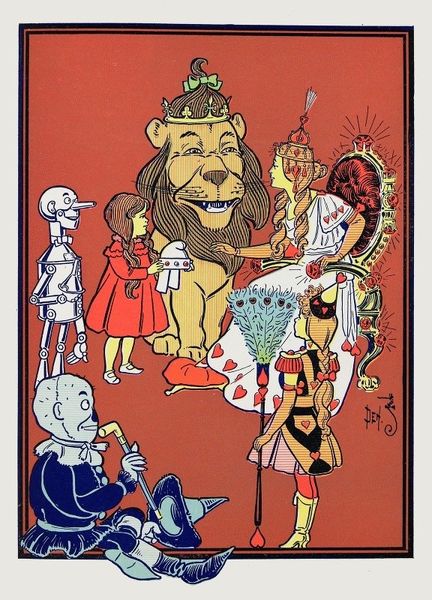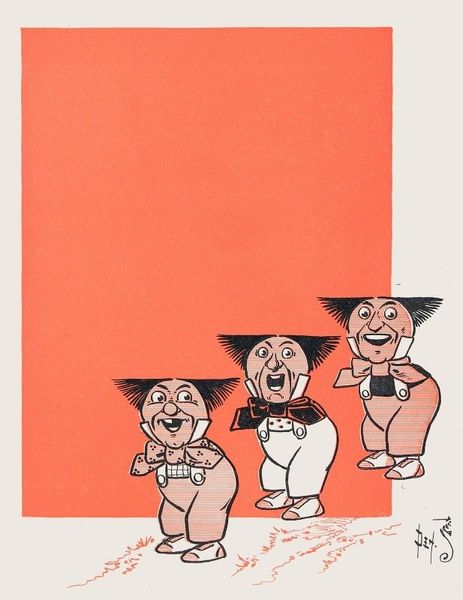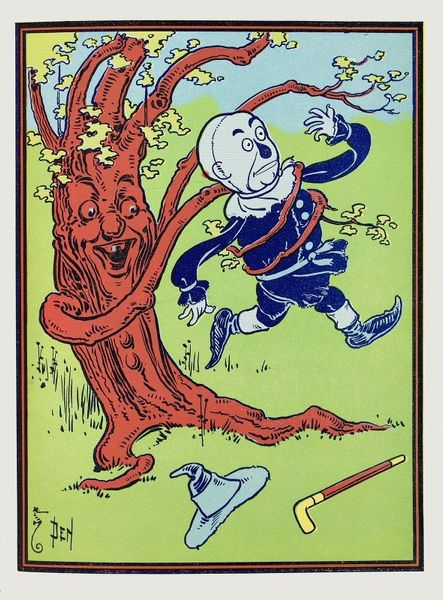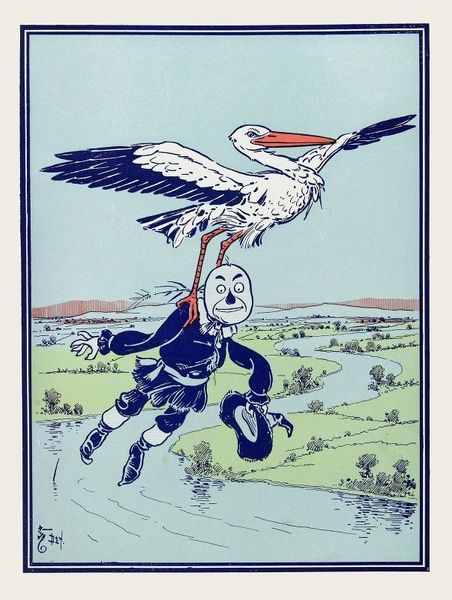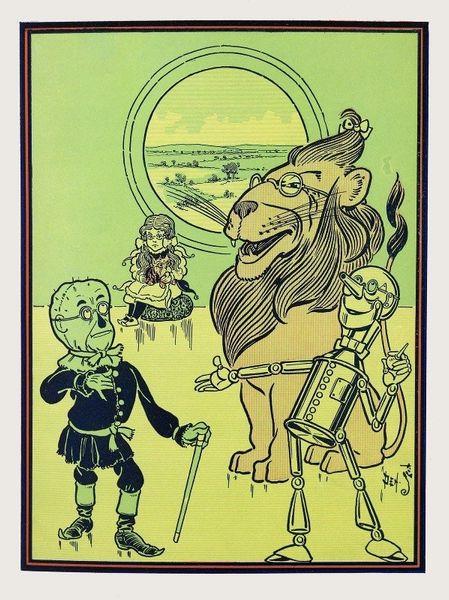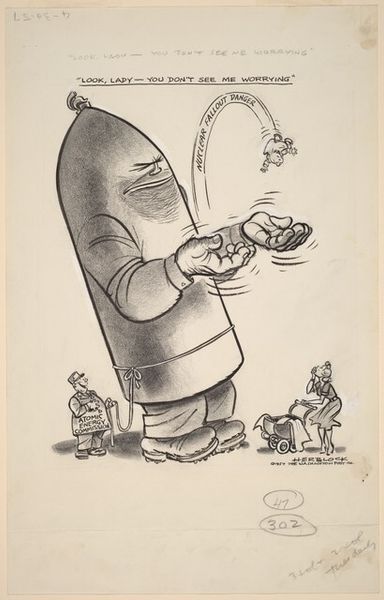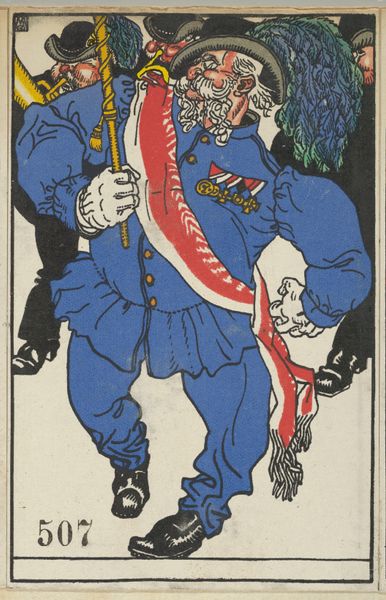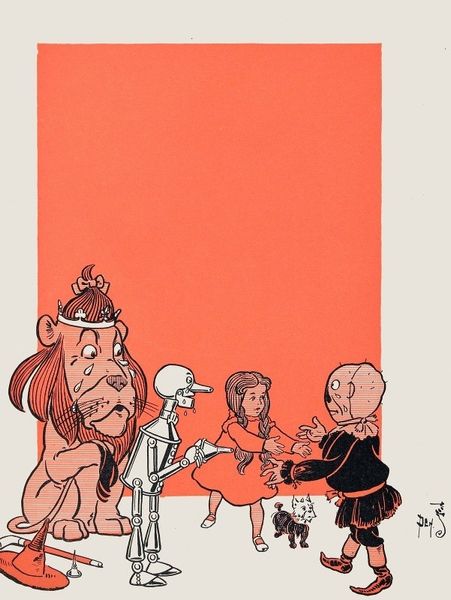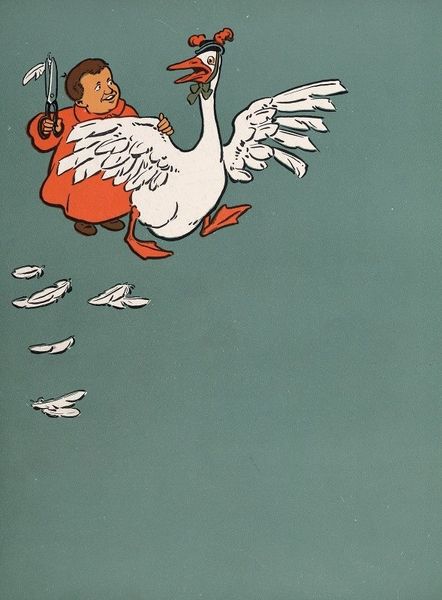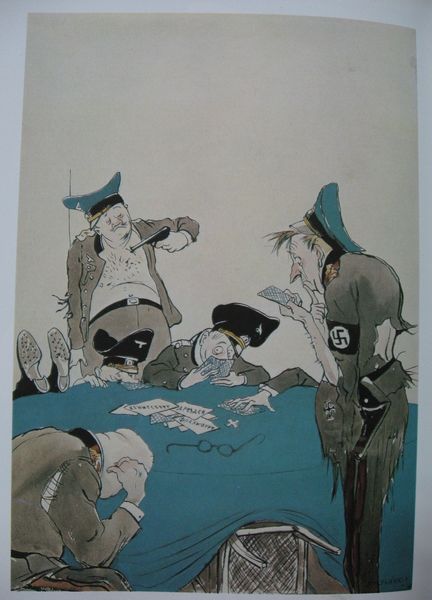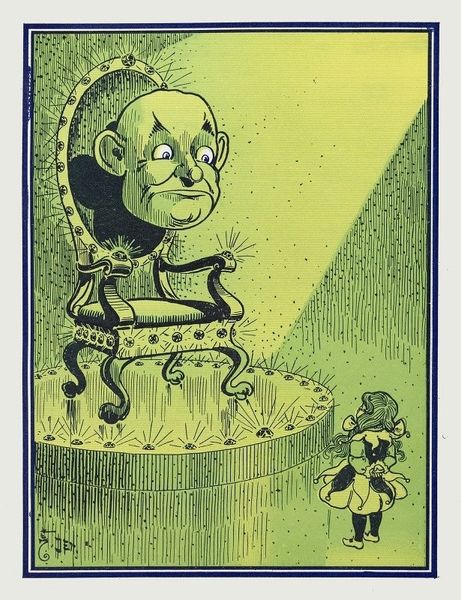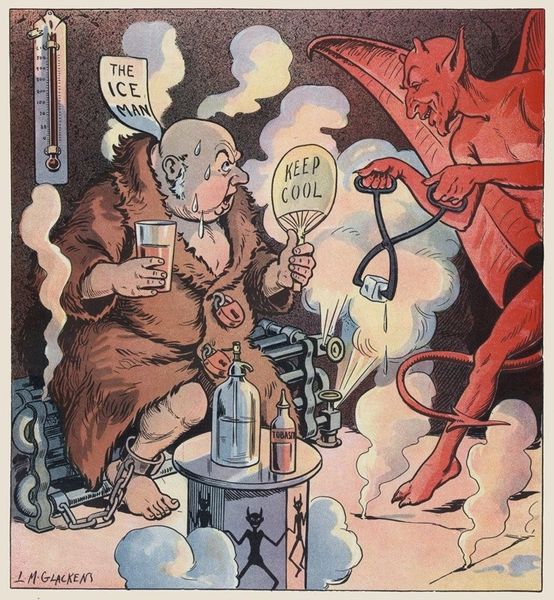
# print
#
caricature
#
caricature
#
folk-art
#
comic
#
comic style
#
cartoon style
Copyright: Public Domain: Artvee
Editor: This is William Wallace Denslow's print from 1900, entitled "The head shot forward and struck the Scarecrow." The composition is pretty wild, with the three menacing figures looming over this… chaotic scene below. What's going on here? How do we interpret it? Curator: It’s useful to remember the social context. Denslow illustrated the first edition of "The Wonderful Wizard of Oz". This print isn’t just whimsical; it taps into anxieties about industrialization and its effect on the common person. Do you notice anything peculiar about the forms depicted? Editor: Well, the Scarecrow’s clearly being attacked, but...the attacker looks almost…detached, like a puppet without strings. Curator: Precisely! It represents the dehumanizing potential of industrial labor, with individuals reduced to mere cogs in a machine. These characters aren’t people but stylized caricatures designed for mass appeal. Consider, who does this imagery benefit and what norms is it reinforcing? Editor: So, even though it's a children's illustration, it's making a pretty sharp commentary about labor conditions and class? It's pretty dark for "The Wizard of Oz". Curator: The "Oz" books and related art were immensely popular, subtly shaping public perception of labor and authority. Denslow was an avowed socialist, by the way. Now does that knowledge change your perspective of the art? Editor: It certainly does! It reveals a hidden layer of meaning within the seemingly innocent depiction. I initially saw slapstick but it's trenchant social critique wrapped in the garb of children’s literature. Curator: Indeed. Analyzing art means understanding the political currents that run through every piece. Editor: This makes me rethink what I know of this artwork. I will now always remember the artist's personal beliefs and historical events while trying to decode its meaning and visual motives. Thanks!
Comments
No comments
Be the first to comment and join the conversation on the ultimate creative platform.
